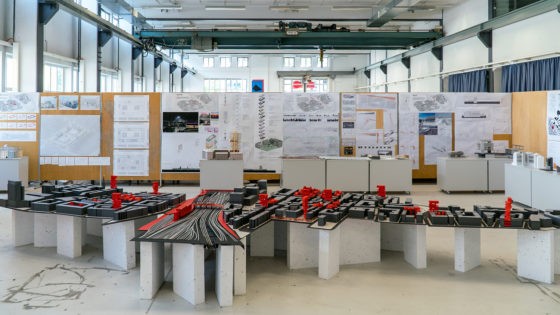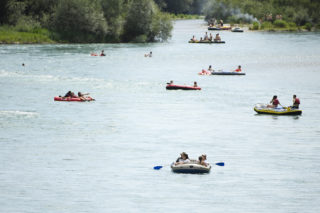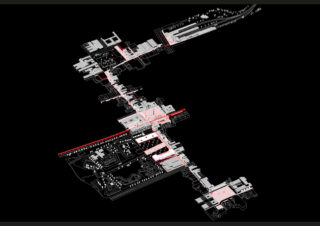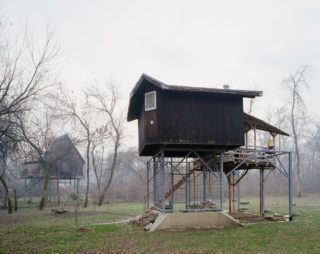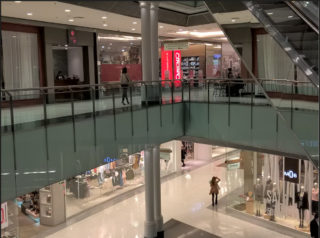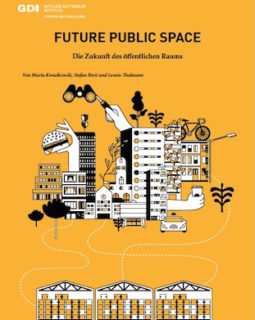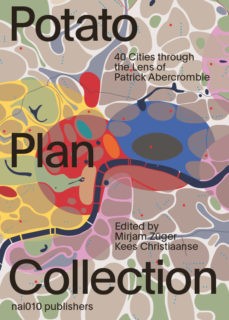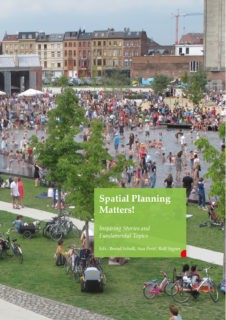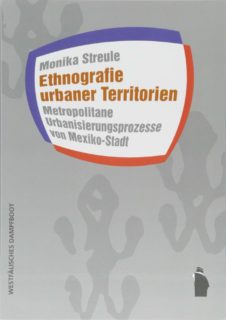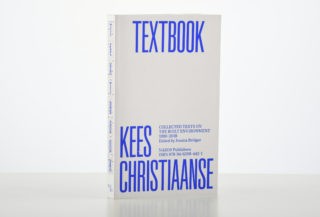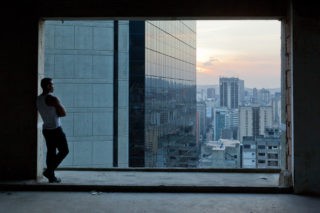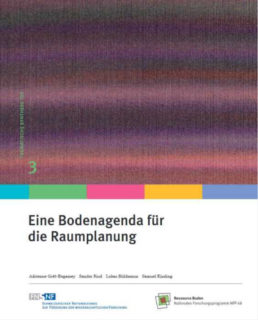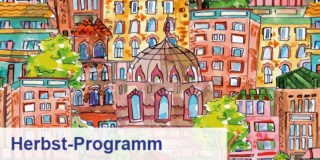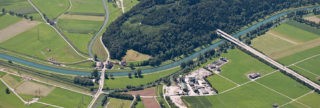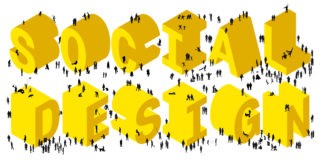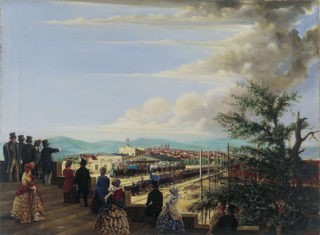Sehr geehrte Leserinnen und Leser
Ist das «öffentlicher Raum», wenn Nutzende überwacht werden, diesen nachts nicht betreten dürfen und tagsüber Eintrittsgebühren bezahlen müssen? Wie sehen ideale öffentliche Räume heute überhaupt aus und wozu brauchen wir sie? Solche Fragen versuchen wir (und viele andere) mit diesem Newsletter zu beantworten. Wir wünschen viel informatives Lesevergnügen.
Our collaborative «Langstrasse with Love – Rogue Urbanism» research aims to develop new building typologies in response to gentrification processes in one of Zurich’s most diverse and inclusive areas, the Langstrasse district. Together with the Chair of Sociology, Prof. Dr. Schmid, and the ETH CASE / Wohnforum, Dr. Tanja Herdt, students of the Urban-Think Tank (U-TT) investigated the neighbourhood in and around Langstrasse during the Spring Semester Studio 2018. This research operates in parallel with our work on the Diploma A topic (urban scale), and with the elective course, «ACTION! On the Real City – Observe, Record: Langstrasse».
Mehr
Ob in München, Istanbul, London oder Zürich: Landschaften im Einzugsgebiet grosser urbaner Zentren werden durch intensive Erholungs- und Sportnutzungen überformt und umgedeutet. Die bis anhin zumeist informell ablaufenden Aneignungsprozesse treten dabei in Konflikt mit bereits vorhandenen Nutzungen und etablierten formellen Regulativen. Im Zuge dieser Entwicklungen gilt es, die Landschaft als (öffentliche) Ressource neu zu denken und zu verhandeln.
Mehr
The collaborative «Urban Prototype» research focuses on alternative architectural projects for the Colombian capital of Bogotá. Among the outputs, typologies, integrated infrastructure, and innovative urban scenarios wer developed, generating challenges to conventional urban development approaches, mobility models, and open space concepts around the Plaza de Los Mártires area in the centre of Bogotá.
Mehr
The project on the unbuilt focuses on the urban body composed from many open landscapes found within the city of Belgrade. These diverse sites of vital ecological resources, productive lands and recreational spaces, have evolved throughout history as urban «voids» within the city fabric. As an antidote to the city‘s ravenous development, we propose to rethink the meaning of the UNBUILT, and envision its contemporary form.
Mehr
The aim of the book chapter «The Changing Nature of Public Space in São Paulo? A Taxonomic Approach» by Anthony Boanada-Fuchs, ETH CASE / ETH Wohnforum, is to establish a tentative link between societal transformation and mutations in public space, by using a city as a case study, that has been dubbed «city of walls».
Mehr
Kees Christiaanse gehört zu den renommiertesten Städteplanern. Nach 15 Jahren als Professor an der ETH Zürich wurde er diesen Sommer emeritiert. Viel ändern werde sich dadurch nicht, sagt er. In seinem Berufsstand gewinne man mit dem Alter. Deshalb wird er weiterhin für sein Ideal der offenen Stadt planen. Artikel in den ETH News
Anticipated population growth, rapid technological development in transportation, climatic change and the transition to domestic renewable energy production in Switzerland are expected to modify outdoor recreation patterns. The project RECREATE Switzerland assesses the future impact of climate change and decarbonsiation of the mobility and energy sector on outdoor recreation in Switzerland based on data provided by IVT in a collaboration of the chair PLUS and the institute ISTP .
Dies ist eine Auswahl. Eine vollständige Liste finden Sie in der ETH Zürich Research Collection.
Marta Kwiatkowski, Stefan Breit, Leonie Thalmann
Städte werden dichter: Immer mehr Menschen müssen sich immer weniger Platz teilen. Gleichzeitig wandelt sich der städtische Raum. Neue Arbeitswelten, veränderte Mobilität, Zielkonflikte zwischen Bewohnern und Touristen oder Strukturwandel im Handel tragen dazu bei. Wird der öffentliche Raum wichtiger? Und weshalb ist er dies überhaupt?
Zusammenarbeit mit der Professur Günther Vogt, Landschaftsarchitektur.
Mehr
Mirjam Züger, Kees Christiaanse (editors)
This book celebrates Patrick Abercrombie and J. H. Forshaw’s renowned ‘Potato Plan’ and assesses its potential as an analytical tool for contemporary metropolitan territories. Originally drawn in 1943 as part of the County of London Plan, Abercrombie’s ‘Social and Functional Analysis’ poetically illustrates the city as an agglomeration of distinct communities, clusters, and centralities. The Potato Plan Collection comprises 40 Potato Plans from all around the globe, each being a reinterpretation of the original by local architects, urban designers and scholars. As a whole, the collection offers a new perspective on the structure of regional configurations in the urban age.
Mehr
Eds.: Bernd Scholl, Ana Perić, Rolf Signer
The book revolves around «inspiring stories» that describe a wide variety of spatial problems as well as the planning mechanisms used to address these; in addition, «fundamental topics» are provided to facilitate the understanding of certain planning processes illustrated by the practical cases. Using case descriptions of a new park in Milan, storm water protection in Chicago, redevelopment of an industrial brownfield in Attisholz or a better solution for a traffic project in Antwerp and by throwing light on the topic of planning approaches, special problem-solving methods or reflective leadership, the book tries to interest readers in the role and importance of spatial planning in securing quality for daily lives as well as bringing about a sustainable urban future. Mehr
Monika Streule
Ethnografie urbaner Territorien lädt buchstäblich ein, durch die Strassen von Mexiko-Stadt zu streifen. In ihrer Auseinandersetzung mit urbanen Produktions- und Aneignungsprozessen nimmt Monika Streule eine sozioterritoriale Perspektive auf tief eingeschriebene gesellschaftliche Machtverhältnisse ein.
Buchvernissage, Mittwoch 17. Oktober 2018, 19:30 Uhr
Mehr
Kees Christiaanse, Jessica Bridger
Collected Texts on the Built Environment 1990–2018
- More than 20 texts by Kees Christiaanse (re-edited and annotated edition)
- Interview with Kees Christiaanse by Jessica Bridger
- Including drawings, watercolours and sketches by Kees Christiaanse
Kees Christiaanse is one of the field’s most influential forces in urban design over the last half-century. Textbook spans 30 years of the well-known urban designer and architect Kees Christiaanse’s thinking about cities. He is responsible for large urban projects, including Hamburg HafenCity, Rotterdam’s waterfront revitalization and London’s Olympic Legacy Plan.
Mehr
Editors: Mike Chieffalo, Julia Smachylo. Authors: Alfredo Brillembourg, Hubert Klumpner, Klearjos Papanicolaou
While much has been written about the fate of buildings that outlast their program, typically in the post-industrial context, this essay «Waiting In The Sky: Test Beds for a Vertical Future in Torre David» addresses the topic from a different angle: vertically. Taking the Centro Financiero Confinanzas – or Torre David – in the center of Caracas, Venezuela as a case study, the essay explores how existing perspectives on urban renewal may be applied to the emerging context of abandoned tall buildings.
Mehr
Adrienne Grêt-Regamey, Sander Kool, Lukas Bühlmann, Samuel Kissling
Thematische Synthese TS3 des Nationalen Forschungsprogramms «Nachhaltige Nutzung der Ressource Boden» (NFP 68).
Die thematischen Synthesen des Nationalen Forschungsprogramms 68 (NFP 68) stellen Konzepte und Strategien zur langfristigen Sicherung der Ressource Boden und ihrer Funktionen und Ökosystemleistungen vor. Der dritte Band der Reihe beschreibt die entscheidende Rolle der Raumplanung für eine nachhaltige Bodennutzung.
Dies ist eine Auswahl. Alle Artikel finden Sie auf der Seite Aktuell.
28. Oktober bis 25. November 2018.
Wie werden künftig Häuser gebaut und Städte geplant? Wie leben, arbeiten und bewegen wir uns im Häusermeer? Das Herbstprogramm dreht sich um digitales Bauen, neue Baustoffe und künftige Formen des Wohnens und der Mobilität. Alle Veranstaltungen sind online. Treffpunkt Science City ist das kostenlose öffentliche Bildungsangebot der ETH Zürich für Erwachsene, Jugendliche und Kinder.
Mehr
5. November 2018 | ETH Zürich, Auditorium Maximum (HG F30), Rämistrasse 101, Zürich
Gewässerentwicklungen lösen Nutzungs- und Flächenkonflikte aus – sei es für Hochwasserschutz, Bewässerung, Erholung, Renaturierungen oder Grundwasserschutz. Die diesjährige Landmanagement Tagung 2018 soll aufzeigen, wo wir heute im Bereich der Gewässerentwicklung stehen und was das Landmanagement zu einem integralen Wasser- und Einzugsgebietsmanagement beitragen kann. Die Tagung dient seit Jahren als Plattform für den Austausch von Wissenschaft, Verwaltung und Praxis aus den Themenbereichen des Landmanagements.
Mehr
21. November 2018 | ETH Zurich Hönggerberg, HIL H 40.4 und HIL H 40.9.
Module mit kurzen, interaktiven Lerneinheiten geben Einblick in das vielseitige Fachgebiet der Geomatik. Eine frei zugängliche Ausstellung und Mitmach-Aktivitäten für Besucherinnen und Besucher aller Altersklassen ergänzen diesen spannenden Tag. Erfassen. Analysieren. Gestalten. Fachleute auf dem Gebiet der Geomatik verwenden unterschiedlichste Messsysteme, Datenquellen und Methoden, um den Lebensraum mit seinen Strukturen und Veränderungen zu digitalisieren, zu analysieren und zu visualisieren.
Mehr
Registration deadline extended to 15 January 2019!
7 to 12 July 2019 in Filzbach (Switzerland).
Students will develop an integrated understanding of land system science and landscape assessment. They learn to use state-of-the-art data, tools, and models for spatial analyses as well as improve their ability to build strong connections between scientific understanding and the communities of practice and policy that govern and manage the use of land.
Mehr
Ausstellung im Museum für Gestaltung, Zurich, vom 5. Oktober 2018 – 3. Februar 2019.
A loom to start a business, a do-it-yourself house, or a solar kiosk for local power supply: social design is design for and with society – and highly topical. The consequences of the global growth economy are becoming increasingly severe for both human beings and the environment. Social design confronts the increasing imbalance of resources, means of production, and future opportunities and relies on a new, equitable exchange between the individual, civil society, the state, and the economy.
Mehr
Exhibition, 23 November 2018, 19:00 Vernissage. 24 November 2018 – 5 May 2019 | SAM Basel.
In Switzerland, the concept of density has noticeably negative connotations. In Swiss political debates on urban development and land-use planning, density is often used as a discursive weapon, conjuring up terrible visions of «built up» cities and horrific scenarios with high-rise buildings «overrunning» the evolved city centres. The exhibition will tackle this image and demonstrate what density actually means, namely sensible utilisation of buildable territory.
Mehr
Redaktionsteam
Sascha Delz, Institut für Städtebau (ISB)
Isabelle Fehlmann, Institut für Landschaftsarchitektur (ILA)
Claudia Gebert, Koordinationsstelle NSL, Chefredaktion
Melanie Fessel, Institut für Städtebau (ISB)
Joe Molloy, Institut für Verkehrsplanung und Transportsysteme (IVT)
Bettina Weibel, Institut für Raum- und Landschaftsentwicklung (IRL)
